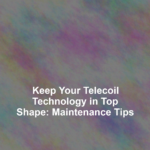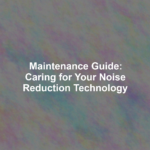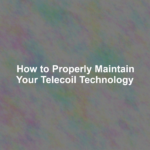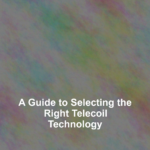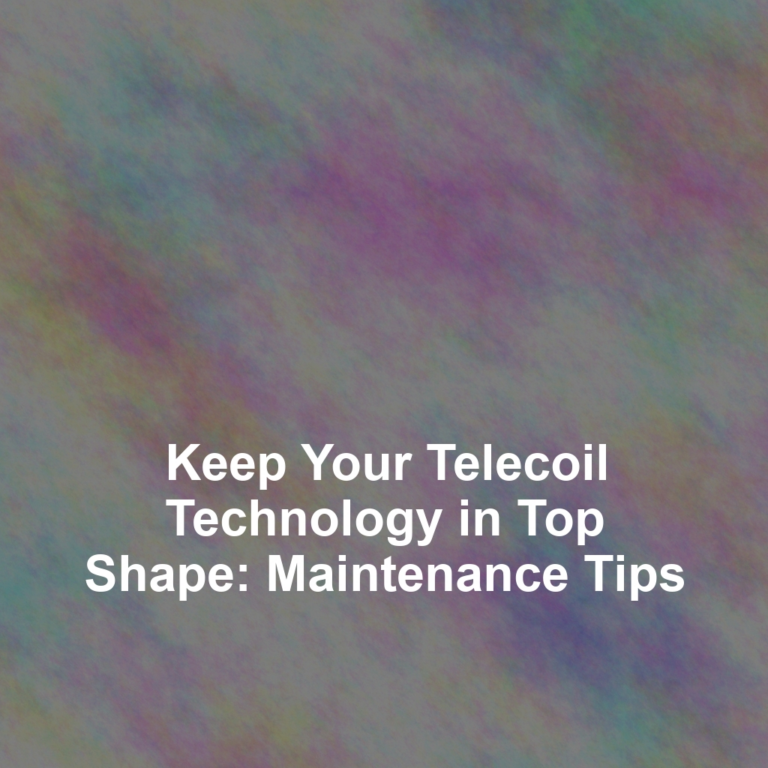Is it really true that with a bit of know-how and regular attention, you can significantly extend the life of your telecoil technology?
As a user of this sophisticated equipment, youG??re likely aware of its benefits in enhancing auditory experiences in various environments. Yet, you may not be fully informed about the specific practices that can prevent wear and tear over time.
ItG??s crucial to understand the ins and outs of proper maintenance, from the simple steps of regular cleaning to the more complex nuances of troubleshooting common issues.
In the following sections, weG??ll guide you through the essential care routines and provide insights into professional servicing that could save you from future inconveniences. Stick around to uncover the key strategies that will ensure your device performs at its best for years to come.
Understanding Telecoil Functionality
A telecoil, often abbreviated as T-coil, is a small copper coil in your hearing device that acts as a specialized receiver for sounds transmitted electromagnetically, such as from telephone handsets or loop systems in public venues. When you switch your hearing aid to the T-coil setting, youG??re essentially turning on this feature. It allows you to hear more clearly by picking up magnetic signals and converting them into sound. This technology bypasses background noise, delivering the sound source directly to your ears.
YouG??ll find that using the T-coil function is a breeze in spaces equipped with a hearing loop. These venues could range from theaters and churches to airports and conference centers. Just look for the hearing loop signG??a stylized ear with a line through it. This indicates that the location is T-coil friendly. There, your device can wirelessly connect to the sound system, so you can hear announcements or performances with crisp clarity.
Regular Cleaning Practices
To maintain your telecoilG??s optimal performance, itG??s crucial to incorporate regular cleaning into your routine. Dust, earwax, and other debris can accumulate and affect the sound quality and functionality of your device.
Start by gently wiping the exterior with a soft, dry cloth. Avoid using water or any liquid cleaners directly on the telecoil, as moisture can damage the internal components.
Once a week, take a moment to inspect the telecoil for visible signs of dirt or blockages. If you find any, use a small, soft-bristled brush to carefully dislodge debris. Be gentle to prevent any damage to the delicate parts.
ItG??s also a good idea to check the manufacturerG??s guidelines, as some may provide specific cleaning instructions or recommend a cleaning kit designed for your telecoil.
Safe Handling and Storage
While regular cleaning is essential for maintaining your telecoil, proper handling and secure storage will further protect it from damage and extend its lifespan. Remember, your telecoil is a delicate piece of technology.
When youG??re not using it, donG??t just toss it into your bag or drawer. Instead, take a moment to place it in a protective case. This case should be rigid enough to shield it from any physical stress and spacious enough to avoid bending any parts.
YouG??ll also want to keep it away from extreme temperatures, as both heat and cold can harm the electronic components. Find a cool, dry place for storage, steering clear of humid areas that might encourage condensation and moisture buildup. If youG??re traveling, keep it in your carry-on luggage to avoid the rough handling and temperature variations of checked bags.
Lastly, avoid wrapping cords too tightly around the device. This can strain the wires and lead to malfunctions. Coil the cords loosely and secure them with a gentle tie if necessary.
Troubleshooting Common Issues
Even with meticulous care, you may encounter issues with your telecoil technology that require basic troubleshooting. HereG??s what you can do to resolve common problems:
-
Check your deviceG??s battery life: Telecoils are often part of devices that rely on power, such as hearing aids. If youG??re experiencing issues, ensure the battery isnG??t depleted.
-
Inspect for physical damage: Look over the device for any visible signs of wear or damage. Sometimes, a simple issue like a loose wire can cause malfunction.
-
Test the telecoil setting: Make sure your device is set to the correct mode. Most devices with telecoils have a G??TG?? setting G?? itG??s easy to accidentally switch modes without realizing.
-
Consult the manual or manufacturer: If youG??re still having trouble, refer to the user manual for device-specific troubleshooting tips, or contact the manufacturer for assistance.
Professional Care and Servicing
If basic troubleshooting doesnG??t solve the issue, itG??s time to seek professional care and servicing for your telecoil-equipped device. YouG??ve done what you can at home, but sometimes, the complexities of these technologies require a trained technicianG??s touch. DonG??t worry; this is a normal part of maintaining your deviceG??s longevity and performance.
When you contact a professional, theyG??ll likely start with a thorough assessment to pinpoint the problem. TheyG??ve got the specialized tools and expertise to diagnose issues that arenG??t apparent to the untrained eye. If your device is still under warranty, make sure to mention thisG??servicing might be covered, saving you out-of-pocket expenses.
Be prepared to describe the problems youG??ve encountered in detail. The more information you provide, the easier itG??ll be for the technician to understand the potential issues. Remember, regular professional check-ups can prevent minor issues from turning into costly repairs, so consider scheduling these even if youG??re not facing immediate problems.
Lastly, always use an authorized service provider for your telecoil device. Unauthorized repairs can void warranties and potentially damage your device further. Trust the pros to keep your technology in top shape, so you can continue to rely on it without hitches.
Conclusion
YouG??ve got the basics of telecoil care down! Remember to gently clean your device regularly, handle it with care, and store it safely.
If you hit a snag, donG??t fretG??most issues are easily fixed. But for those times when a quick fix wonG??t cut it, donG??t hesitate to seek professional help.
Keep up with these simple steps, and youG??ll ensure your telecoil tech stays in tip-top shape for years to come.


